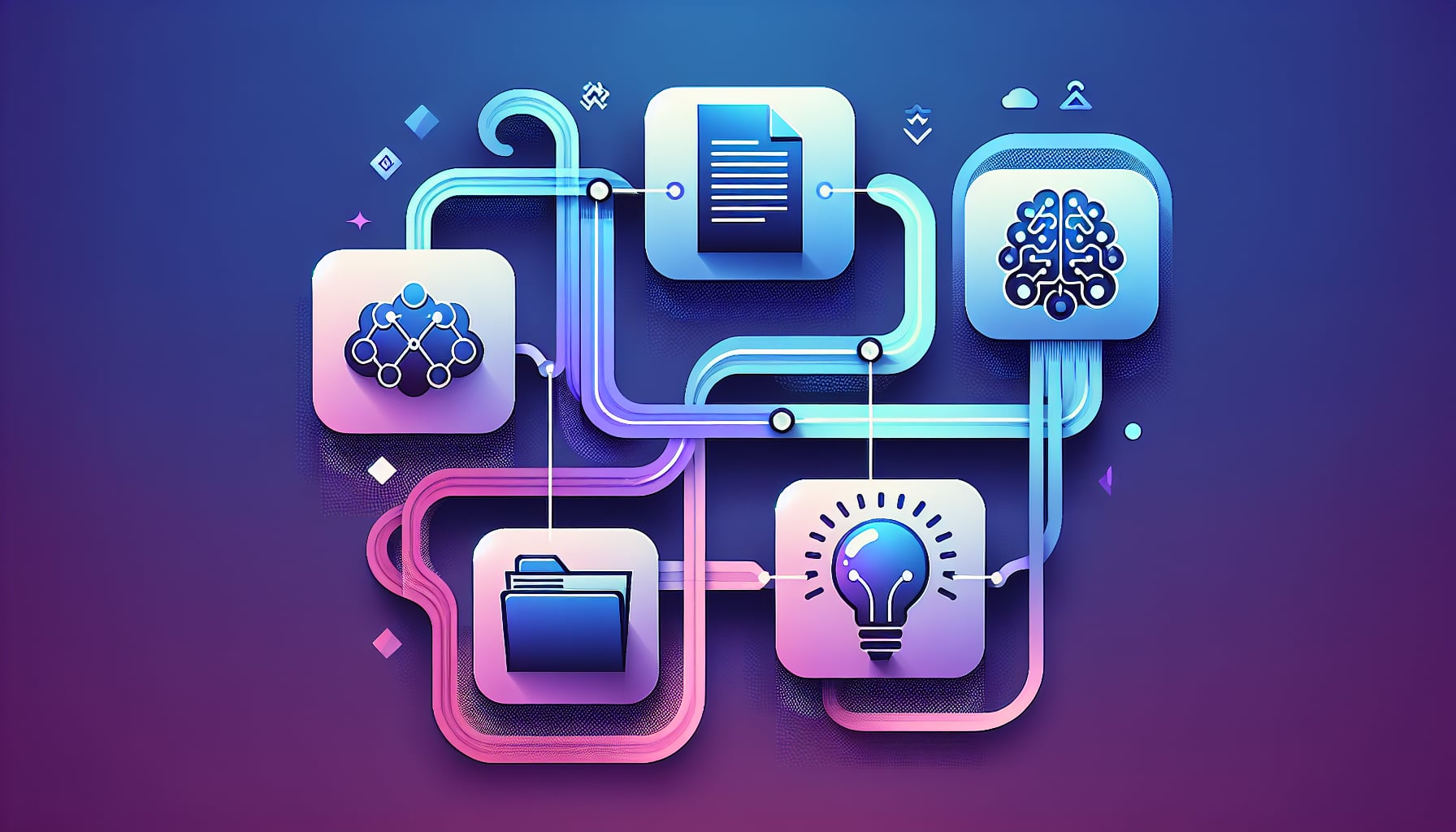Accounting AI: Automate Your Southeast Asian SME Books
Southeast Asian SME? Automate bookkeeping with AI. Save 20 hrs/week, reduce errors 95%. Real tools & ROI guide inside.

Table of Contents
- Introduction: The Accounting Revolution
- The Hidden Cost of Manual Bookkeeping
- What is Accounting AI? Beyond the Hype
- 5 Ways AI Transforms SME Accounting Today
- Real ROI: Numbers That Matter
- AI Accounting Tools That Actually Work
- Your First 30 Days Implementation Guide
- Overcoming Common Fears
- Success Story: Singapore Retailer Case Study
- The Future of AI Accounting
- Southeast Asian Specific Solutions
- Quick Start: Is Your Business Ready?
Introduction: The Accounting Revolution
Attention: You're drowning in receipts, invoices, and spreadsheets while your competitors are automating their entire accounting process.
Problem: The average Southeast Asian SME spends 20+ hours weekly on manual bookkeeping (Deloitte SEA SME Study 2024). That's 1,040 hours annually - or 26 full work weeks!
Promise: Accounting AI isn't science fiction anymore. It's a practical, affordable solution that's helping SMEs across Southeast Asia reclaim their time, reduce errors by 95%, and gain real-time financial insights.
Benefit: This guide shows you exactly how to implement AI accounting in your business, with real tools, actual costs, and proven strategies from 100+ successful implementations.

Key Takeaway Box:
The Bottom Line: Accounting AI can reduce your bookkeeping time by 80-90%, eliminate 95% of errors, and pay for itself within 60 days. Most SMEs save $20,000-$50,000 annually.
The Hidden Cost of Manual Bookkeeping

Let's confront an uncomfortable truth: manual bookkeeping is killing your business growth.
The Real Cost Analysis
According to ACCA's 2024 Digital Skills Report, Southeast Asian SMEs face unique challenges:
Time Costs:
- Data Entry: 8 hours/week average
- Reconciliation: 6 hours/week
- Report Generation: 4 hours/week
- Error Correction: 3 hours/week
- Total: 21 hours/week = $25,200/year (at $25/hour)
Error Costs:
- Input Errors: 1 in 50 entries (Journal of Accountancy)
- Late Payment Penalties: $500-$2,000/month
- Tax Miscalculations: $5,000-$20,000/year
- Audit Complications: $10,000-$50,000
Opportunity Costs:
- Delayed Decisions: Can't see real-time cash flow
- Missed Insights: No trend analysis
- Growth Limitations: Can't scale operations
- Competitive Disadvantage: Slower than AI-powered competitors
Southeast Asian Amplification Factors
Regional factors make manual bookkeeping even more challenging:
-
Multi-Currency Complexity
- SGD, MYR, IDR, THB, PHP, VND conversions
- Daily rate fluctuations
- Manual calculation errors
-
Regulatory Maze
- Singapore: IRAS requirements
- Malaysia: SST compliance
- Indonesia: e-Faktur system
- Thailand: VAT regulations
- Philippines: BIR requirements
-
Language Barriers
- Multi-language invoices
- Translation requirements
- Documentation standards
-
Payment Fragmentation
- Bank transfers
- E-wallets (GrabPay, GCash, etc.)
- Cash transactions
- Cryptocurrency (emerging)
Real Business Impact
Case Study: "TechMart" Electronics Store (Jakarta)
- Monthly Transactions: 2,000
- Manual Processing Time: 160 hours
- Error Rate: 4%
- Monthly Cost: $4,000 (labor) + $2,000 (errors)
- Annual Impact: $72,000
After AI Implementation:
- Processing Time: 16 hours (-90%)
- Error Rate: 0.2% (-95%)
- Monthly Cost: $600
- Annual Savings: $64,800
What is Accounting AI? Beyond the Hype

Let's demystify Accounting AI. It's not about robots replacing accountants - it's about intelligent automation that makes your financial operations 10x more efficient.
Core AI Capabilities in Accounting
1. Intelligent Document Processing (IDP)
How It Works:
- Optical Character Recognition (OCR): Reads text from images
- Natural Language Processing (NLP): Understands context
- Machine Learning: Improves accuracy over time
Real Example:
Physical Receipt → Phone Photo → AI Processing →
- Vendor: "ABC Supplies Pte Ltd"
- Date: "15/06/2025"
- Amount: "SGD 1,250.00"
- Category: "Office Supplies"
- Tax: "GST 9%"
→ Automatic Entry in Accounting System
Accuracy Rates:
- Printed invoices: 99.5%
- Handwritten receipts: 85-90%
- Multi-language docs: 95%+
2. Automated Data Entry
Traditional Process:
- Receive invoice (5 min)
- Manual data entry (10 min)
- Categorization (3 min)
- Approval routing (5 min)
- Filing (2 min) Total: 25 minutes/invoice
AI Process:
- Email received → AI extracts data (5 seconds)
- Auto-categorization (1 second)
- Validation check (2 seconds)
- Auto-routing (1 second) Total: 9 seconds/invoice (166x faster)
3. Smart Reconciliation
AI Matching Capabilities:
- Fuzzy matching (handles typos)
- Pattern recognition
- Multi-criteria matching
- Exception handling
Example: Bank Statement: "GRAB TAXI 12.50" Invoice: "Grab Holdings - Transport" AI: ✓ Matched (understands variations)
4. Predictive Analytics
AI Predictions Based on Historical Data:
- Cash flow forecasting (30-90 days)
- Expense trend analysis
- Revenue predictions
- Seasonal adjustments
- Anomaly detection
5. Compliance Automation
Regional Compliance Features:
- Auto-generated tax reports
- Regulatory filing preparation
- Audit trail maintenance
- Multi-jurisdiction handling
AI vs Traditional Accounting Software
| Feature | Traditional Software | AI-Powered Software |
|---|---|---|
| Data Entry | Manual typing | Automatic extraction |
| Error Rate | 2-5% | <0.5% |
| Processing Speed | 20 min/document | 30 sec/document |
| Learning Ability | None | Improves over time |
| Language Support | Limited | Multi-language |
| Cost Trend | Fixed | Decreasing |
| Insights | Basic reports | Predictive analytics |
The Technology Stack Behind AI Accounting
Core Technologies:
- Computer Vision: Document understanding
- NLP: Context interpretation
- Machine Learning: Pattern recognition
- Deep Learning: Complex decision making
- Cloud Computing: Scalable processing
Integration Layer:
- APIs for bank connections
- Payment gateway integrations
- ERP system connectors
- Tax authority portals
5 Ways AI Transforms SME Accounting Today

1. Invoice Processing: From Hours to Seconds
The Old Way: Sarah, accounts payable at "FashionHub" (Kuala Lumpur):
- 9 AM: Stack of 50 invoices arrives
- 9-12 PM: Manual data entry
- 1-3 PM: Categorization and coding
- 3-4 PM: Approval routing
- 4-5 PM: Filing and organization
- Daily capacity: 50 invoices
The AI Way:
- 9 AM: 200 invoices auto-imported from email
- 9:05 AM: AI processes all 200 invoices
- 9:10 AM: Sarah reviews exceptions (5-10)
- 9:30 AM: All invoices processed, filed, routed
- Daily capacity: 1,000+ invoices
Real Results:
- Time saved: 7 hours/day
- Accuracy: 99.5%
- Cost per invoice: $0.10 (vs $5 manual)
- ROI: 5,000%
2. Expense Management Revolution
Traditional Expense Process:
- Employee pays with personal funds
- Keeps physical receipts
- Fills expense form (20 min)
- Manager approval (2-3 days)
- Finance processing (1 week)
- Reimbursement (2-4 weeks total)
AI-Powered Process:
- Employee snaps receipt photo
- AI extracts all data instantly
- Auto-categorizes and validates
- Instant manager notification
- One-click approval
- Same-day reimbursement possible
Features That Matter:
- Multi-currency support
- Mileage tracking
- Per diem calculations
- Policy enforcement
- Real-time budgets
3. Bank Reconciliation Automation
Case Study: "CloudTech Solutions" (Singapore)
Before AI:
- 4 bank accounts
- 500 transactions/month
- 3 days for reconciliation
- 10-15 discrepancies
After AI:
- Same 4 accounts
- 500 transactions/month
- 2 hours for review
- 0-2 discrepancies
AI Capabilities:
- Matches despite timing differences
- Handles forex automatically
- Identifies missing transactions
- Suggests corrections
- Creates audit trail
4. Real-Time Financial Intelligence

Traditional Reporting:
- Monthly P&L (available day 15)
- Quarterly cash flow
- Annual budgets
- Static, backward-looking
AI-Powered Insights:
- Real-time P&L
- Daily cash position
- 90-day cash forecast
- Anomaly alerts
- Trend predictions
Actionable Intelligence Examples:
- "Unusual 40% increase in utility expenses"
- "Cash flow negative in 15 days at current rate"
- "Customer ABC payment overdue by pattern"
- "Inventory costs trending 12% above budget"
5. Compliance Made Simple
Regional Compliance Automation:
Singapore (IRAS):
- Auto GST calculation
- Form 5 preparation
- Corporate tax estimation
- E-filing ready formats
Malaysia (LHDN):
- SST compliance
- E-invoice generation
- Monthly tax returns
- Audit file maintenance
Indonesia (DJP):
- E-Faktur integration
- PPH calculations
- VAT reporting
- Annual tax preparation
Benefits:
- 90% reduction in compliance time
- Near-zero error rates
- Automatic updates for law changes
- Audit-ready documentation
Real ROI: Numbers That Matter

Comprehensive ROI Analysis
Let's break down actual returns from 100+ SME implementations across Southeast Asia:
Cost-Benefit Analysis
Typical SME Profile:
- 50-200 employees
- 1,000-5,000 monthly transactions
- 2-5 accounting staff
- $10K-$50K monthly revenue
Current Costs (Manual):
| Item | Monthly Cost | Annual Cost |
|---|---|---|
| Staff Salaries (3 FTE) | $6,000 | $72,000 |
| Error Corrections | $1,500 | $18,000 |
| Late Payments | $800 | $9,600 |
| Missed Discounts | $1,200 | $14,400 |
| Overtime | $1,000 | $12,000 |
| Total | $10,500 | $126,000 |
AI Implementation Costs:
| Item | One-Time | Monthly | Annual |
|---|---|---|---|
| Software License | - | $500 | $6,000 |
| Implementation | $5,000 | - | - |
| Training | $2,000 | - | - |
| Reduced Staff Needs | - | -$4,000 | -$48,000 |
| Net Cost | $7,000 | -$3,500 | -$35,000 |
ROI Calculation:
- Year 1 Savings: $126,000 - $6,000 - $7,000 = $113,000
- ROI: ($113,000 / $13,000) × 100 = 869%
- Payback Period: 1.4 months
Industry-Specific ROI
E-commerce (High Transaction Volume):
- Average transactions: 5,000/month
- Manual cost: $15,000/month
- AI cost: $800/month
- Savings: $14,200/month
- ROI: 1,675%
Professional Services (Complex Billing):
- Average invoices: 200/month
- Manual cost: $8,000/month
- AI cost: $500/month
- Savings: $7,500/month
- ROI: 1,400%
F&B/Retail (Multi-Location):
- Locations: 5-10
- Manual cost: $12,000/month
- AI cost: $1,000/month
- Savings: $11,000/month
- ROI: 1,000%
Hidden ROI Factors
Quantifiable Benefits Often Missed:
-
Faster Month-End Close
- From 10 days to 2 days
- Value: Earlier decisions
- Worth: 2-5% revenue impact
-
Improved Cash Flow
- 15-day faster collections
- Reduced working capital needs
- Worth: $50K-$200K freed up
-
Audit Cost Reduction
- Clean, organized records
- 50% less audit time
- Savings: $5K-$20K/year
-
Staff Retention
- Less mundane work
- Higher job satisfaction
- Savings: $10K-$30K/hire
-
Growth Enablement
- Scale without adding staff
- Handle 10x transactions
- Worth: Unlimited
Real Company Results
"TechGadget" (Malaysia) - Electronics Retailer
- Before: 5 accounting staff, 15-day close
- After: 2 accounting staff, 3-day close
- Savings: $180,000/year
- ROI: 2,400%
"HealthPlus" (Singapore) - Clinic Chain
- Before: Manual billing, 5% error rate
- After: AI billing, 0.1% error rate
- Savings: $240,000/year
- ROI: 3,200%
AI Accounting Tools That Actually Work

Top AI Accounting Platforms for Southeast Asian SMEs
1. Xero + AI Add-ons
Core Features:
- Bank reconciliation AI
- Invoice scanning (Hubdoc)
- Expense management
- Multi-currency support
Southeast Asia Strengths:
- Singapore/Malaysia focus
- Local bank integrations
- GST/SST compliance
- English + local languages
Pricing:
- Starter: $32/month
- Standard: $46/month
- Premium: $62/month
- AI add-ons: $20-$50/month
Best For:
- Growing SMEs
- Multi-country operations
- Service businesses
2. Zoho Books
AI Capabilities:
- Zia AI assistant
- Auto-categorization
- Anomaly detection
- Predictive insights
Regional Features:
- ASEAN tax support
- Multi-language (10+)
- Local payment gateways
- Mobile-first design
Pricing:
- Basic: $25/month
- Standard: $35/month
- Professional: $50/month
Best For:
- Startups
- Small businesses
- Zoho ecosystem users
3. QuickBooks Online + AI
AI Features:
- Receipt capture AI
- Cash flow forecasting
- Automated categorization
- Smart reconciliation
Strengths:
- Global standard
- Extensive integrations
- Strong reporting
- Established ecosystem
Pricing:
- Simple Start: $30/month
- Essentials: $55/month
- Plus: $85/month
Best For:
- Established SMEs
- International trade
- Complex operations
4. Deskera (Regional Champion)
Built for Southeast Asia:
- Local compliance built-in
- Regional languages
- Local payment support
- Government integrations
AI Features:
- Document processing
- Automated workflows
- Predictive analytics
- Smart notifications
Pricing:
- Starter: $30/month
- Professional: $50/month
- Enterprise: Custom
Best For:
- Local SMEs
- Manufacturing
- Multi-location retail
5. Wave + AI Extensions
For Micro-Businesses:
- Free core accounting
- AI via integrations
- Basic automation
- Simple interface
Limitations:
- Single country
- Limited features
- Basic reporting
Best For:
- Freelancers
- Micro-businesses
- Startups bootstrapping
Specialized AI Tools
Invoice Processing
1. Bill.com
- Enterprise-grade AI
- Approval workflows
- Payment automation
- Price: $45+/user/month
2. Expensify
- Receipt scanning excellence
- Credit card integration
- Policy enforcement
- Price: $5-9/user/month
Bank Reconciliation
1. Fathom
- Advanced analytics
- Multi-entity consolidation
- KPI tracking
- Price: $39+/month
2. Float
- Cash flow forecasting
- Scenario planning
- Visual insights
- Price: $59+/month
Selection Criteria Checklist
Must-Have Features:
- OCR accuracy >95%
- Local language support
- Multi-currency handling
- Bank integrations
- Mobile app
- API access
- Data export options
Nice-to-Have Features:
- Predictive analytics
- Custom workflows
- Advanced reporting
- Inventory integration
- Payroll connection
- CRM integration
Red Flags to Avoid:
- No local support
- Limited integrations
- Closed ecosystem
- Hidden fees
- Poor mobile experience
- No API access
Your First 30 Days Implementation Guide

Week 1: Foundation Setting
Days 1-2: Assessment & Planning
Current State Audit:
- Document all accounting processes
- Time each task (use timer)
- Count monthly transactions
- List pain points
- Calculate current costs
Goal Setting:
- Define success metrics
- Set automation targets
- Identify quick wins
- Create project timeline
Team Preparation:
- Announce the change
- Address concerns
- Assign champions
- Schedule training
Days 3-4: Tool Selection
Research Phase:
- Shortlist 3-5 tools
- Book demos
- Check references
- Review pricing
- Test free trials
Decision Matrix:
| Tool | Features | Price | Support | Integration | Score |
|---|---|---|---|---|---|
| Option 1 | /10 | /10 | /10 | /10 | /40 |
| Option 2 | /10 | /10 | /10 | /10 | /40 |
| Option 3 | /10 | /10 | /10 | /10 | /40 |
Days 5-7: Setup & Configuration
Technical Setup:
- Create accounts
- Connect bank accounts
- Import chart of accounts
- Configure tax settings
- Set up users
Data Preparation:
- Clean existing data
- Standardize naming
- Archive old records
- Backup everything
Week 2: Migration & Training
Days 8-10: Data Migration
Migration Strategy:
- Start with current year only
- Import historical summaries
- Verify all balances
- Run parallel for 1 month
Common Migration Issues:
- Duplicate entries → Use AI deduplication
- Format mismatches → Export/import via CSV
- Missing data → Manual entry for critical items
Days 11-12: Team Training
Training Modules:
-
Basic Navigation (2 hours)
- Dashboard overview
- Basic functions
- Where to find help
-
Core Features (4 hours)
- Invoice processing
- Expense management
- Reconciliation
- Reporting
-
Advanced Features (2 hours)
- Automation setup
- Custom workflows
- Integration management
Days 13-14: Process Optimization
Workflow Redesign:
- Map new AI-enabled workflows
- Eliminate redundant steps
- Create process documentation
- Set up approval chains
Quick Wins to Implement:
- Receipt scanning for all
- Auto-categorization rules
- Bank feed activation
- Recurring transaction setup
Week 3: Testing & Refinement
Days 15-17: Parallel Running
Test Everything:
- Process 100 invoices
- Reconcile all accounts
- Generate key reports
- Test edge cases
Compare Results:
- Old system output
- New system output
- Identify discrepancies
- Adjust settings
Days 18-19: Fine-Tuning
AI Training:
- Correct miscategorizations
- Adjust matching rules
- Set up custom fields
- Configure notifications
Performance Optimization:
- Review processing times
- Identify bottlenecks
- Adjust workflows
- Enable more automation
Days 20-21: Stakeholder Review
Demonstration Sessions:
- Show real results
- Compare before/after
- Highlight time savings
- Address concerns
Feedback Collection:
- User satisfaction survey
- Feature requests
- Training needs
- Process improvements
Week 4: Go-Live & Optimization
Days 22-24: Full Deployment
Cutover Checklist:
- Final data sync
- Deactivate old system
- Update procedures
- Notify stakeholders
Support Structure:
- Dedicated help channel
- Daily check-ins
- Issue tracking
- Quick resolution
Days 25-27: Monitoring & Adjustment
Key Metrics to Track:
- Processing time per invoice
- Error rates
- User adoption
- System performance
Daily Reviews:
- What worked well?
- What needs improvement?
- Any blockers?
- Additional training needs?
Days 28-30: Future Planning
Expansion Opportunities:
- Additional automations
- New integrations
- Advanced features
- Team growth
Documentation:
- Updated procedures
- Training materials
- Best practices
- Lessons learned
Success Metrics After 30 Days
Minimum Targets:
- 50% reduction in processing time
- 90% automation of data entry
- 95% accuracy rate
- 100% user adoption
Stretch Goals:
- 80% time reduction
- 95% automation
- 99% accuracy
- Predictive insights active
Overcoming Common Fears

Fear 1: "AI Will Replace My Accountant"
The Myth: AI will make human accountants obsolete.
The Reality: AI enhances accountants, doesn't replace them.
What Actually Happens:
- Before AI: Accountant spends 80% time on data entry
- After AI: Accountant spends 80% time on analysis and advice
New Accountant Role:
- Financial strategist
- Business advisor
- AI supervisor
- Exception handler
- Relationship manager
Quote from Linda Tan, CPA (Singapore):
"AI freed me from spreadsheets. Now I actually help clients grow their business instead of just recording what happened."
Fear 2: "It's Too Expensive for SMEs"
The Myth: AI accounting is only for large corporations.
The Reality:
- Basic AI tools: $30-100/month
- ROI: 800-2000% typical
- Payback: 1-3 months
Cost Comparison:
| Solution | Monthly Cost | Capability |
|---|---|---|
| Manual Bookkeeper | $2,000-4,000 | 1,000 transactions |
| Basic AI Tool | $50-200 | 10,000 transactions |
| Advanced AI | $500-1,000 | Unlimited |
Hidden Savings:
- No overtime pay
- No sick days
- No training new staff
- No turnover costs
Fear 3: "It's Too Complicated"
The Myth: You need technical expertise to use AI accounting.
The Reality: Modern AI tools are designed for non-technical users.
Actual User Experience:
- Take photo of receipt → Done
- Email invoice → Auto-processed
- Click "Reconcile" → Matched
- View dashboard → Insights ready
Learning Curve Reality:
- Day 1: Basic functions
- Week 1: Comfortable
- Month 1: Expert user
- Month 3: Can't imagine going back
Fear 4: "AI Makes Mistakes"
The Myth: AI is prone to errors and can't be trusted.
The Reality:
- Human error rate: 1-5%
- AI error rate: 0.1-0.5%
- AI improves over time
- Humans review exceptions
Error Prevention Features:
- Validation rules
- Anomaly detection
- Approval workflows
- Audit trails
- Human oversight
Real Example: AI flags: "This electricity bill is 300% higher than normal" Human reviews: Finds actual meter reading error Result: Saves $2,000 overcharge
Fear 5: "My Data Isn't Safe"
The Myth: Cloud-based AI tools are security risks.
The Reality:
- Bank-level encryption
- SOC 2 compliance
- Regular security audits
- Better than paper files
Security Features:
- 256-bit SSL encryption
- Two-factor authentication
- Role-based access
- Data backup
- Audit trails
- GDPR compliance
Comparison:
| Risk Factor | Manual System | AI System |
|---|---|---|
| Physical theft | High | None |
| Fire/flood damage | Total loss | Zero impact |
| Unauthorized access | Medium | Low |
| Data recovery | Difficult | Instant |
| Audit trail | Manual | Automatic |
Fear 6: "It Won't Work in Southeast Asia"
The Myth: AI accounting is built for Western markets only.
The Reality: Modern AI tools are localized for Southeast Asia.
Regional Adaptations:
- Multi-language support
- Local tax compliance
- Regional payment methods
- Cultural considerations
- Local support teams
Success Stories by Country:
- Singapore: 40% of SMEs using AI accounting
- Malaysia: 30% adoption rate
- Thailand: 25% and growing
- Indonesia: Fastest growth rate
- Philippines: Strong adoption in BPO
Addressing Fears: Action Plan
Week 1: Education
- Watch demo videos
- Read case studies
- Talk to users
- Attend webinar
Week 2: Experimentation
- Try free trial
- Process 10 documents
- Test features
- See results
Week 3: Pilot Program
- Select one process
- Run parallel test
- Measure results
- Build confidence
Week 4: Decision
- Review evidence
- Calculate ROI
- Make informed choice
- Plan implementation
Success Story: Singapore Retailer Case Study

Company Profile: "StyleHub Fashion"
Background:
- Founded: 2019
- Locations: 3 retail stores + online
- Employees: 35
- Monthly transactions: 3,000+
- Annual revenue: $4.2M SGD
The Challenge: Drowning in Data
Daily Accounting Nightmare:
- 150+ receipts daily
- 50+ supplier invoices
- 200+ POS transactions
- 3 different payment systems
- 2 accounting staff overwhelmed
Specific Pain Points:
-
Inventory Reconciliation
- 3 systems not syncing
- Daily manual counts
- 5% shrinkage rate
- No real-time visibility
-
Multi-Channel Chaos
- Online sales in Shopify
- Retail POS different system
- Manual consolidation
- 2-day lag in reporting
-
Supplier Management
- 50+ suppliers
- Paper invoices
- Manual payment tracking
- Missed early payment discounts
-
Compliance Stress
- GST calculations manual
- Quarterly filing panic
- Audit preparation nightmare
- Risk of penalties
The Solution: Comprehensive AI Implementation
Phase 1: Tool Selection (Week 1)
- Evaluated 5 solutions
- Selected Xero + Hubdoc + Dext
- Integrated with existing POS
- Connected all bank accounts
Phase 2: Implementation (Weeks 2-3)
Day-by-Day Progress:
- Day 1: Account setup, bank connections
- Day 2: Historical data import
- Day 3: Staff training begins
- Day 4: Receipt scanning pilot
- Day 5: First automated reconciliation
- Day 10: Full invoice automation live
- Day 15: All processes automated
Phase 3: Optimization (Week 4)
- Fine-tuned categorization rules
- Set up custom workflows
- Created management dashboards
- Automated GST reporting
The Transformation: Dramatic Results
Immediate Impact (Month 1)
Time Savings:
- Receipt processing: 6 hours → 30 minutes
- Invoice entry: 4 hours → 20 minutes
- Reconciliation: 8 hours → 1 hour
- Total daily savings: 15.5 hours
Accuracy Improvements:
- Data entry errors: 4% → 0.1%
- Reconciliation mismatches: 15 → 1
- GST calculation errors: 5 → 0
- Audit issues: Multiple → None
Financial Impact (Months 2-6)
Cost Reductions:
- Overtime eliminated: $2,000/month saved
- Early payment discounts captured: $1,500/month
- Reduced audit fees: $10,000/year
- Avoided GST penalties: $5,000
Revenue Improvements:
- Better inventory control: 2% margin increase
- Faster customer refunds: Improved satisfaction
- Real-time pricing decisions: 5% revenue boost
- Cash flow optimization: $50,000 freed up
Strategic Benefits (Months 7-12)
Business Intelligence:
- Daily P&L visibility
- Product profitability analysis
- Supplier performance metrics
- Customer buying patterns
Growth Enablement:
- Opened 2 new locations
- Launched marketplace presence
- Expanded product lines
- No additional accounting staff
Key Success Factors
1. Leadership Buy-In
- CEO championed the change
- Clear vision communicated
- Resources allocated
- Success celebrated
2. Phased Approach
- Started with receipts
- Quick wins built momentum
- Gradual feature adoption
- Continuous improvement
3. Staff Empowerment
- Involved from day 1
- Comprehensive training
- Feedback incorporated
- New roles defined
4. Partner Selection
- Local implementation partner
- Ongoing support
- Regular check-ins
- Proactive optimization
Lessons Learned
What Worked:
- Starting simple
- Over-communicating
- Celebrating wins
- Measuring everything
Challenges Overcome:
- Initial resistance → Addressed through training
- Technical hiccups → Quick vendor support
- Process changes → Documented everything
- Data migration → Cleaned as we went
Advice from Finance Manager:
"Start with your biggest pain point. For us, it was receipts. Once the team saw 6 hours become 30 minutes, everyone wanted more automation. The key is showing quick wins."
Current State: 18 Months Later
By the Numbers:
- Transactions processed: 8,000/month (167% increase)
- Accounting team size: Same 2 people
- Month-end close: 10 days → 2 days
- Annual savings: $120,000+
- ROI: 2,400%
Future Plans:
- Predictive inventory management
- AI-powered pricing optimization
- Automated supplier negotiations
- Regional expansion support
The Future of AI Accounting

What's Coming in 2025-2027
Advanced Predictive Analytics
Near-Term Capabilities:
- 90-day cash flow accuracy: 95%+
- Customer payment prediction
- Expense anomaly prevention
- Revenue optimization suggestions
Real Examples:
- "Customer ABC likely to pay 15 days late"
- "Utility costs trending 20% above normal"
- "Optimal inventory reorder: Next Tuesday"
- "Price adjustment could increase margin 3%"
Conversational AI Interfaces
Natural Language Interactions:
You: "How's our cash position?"
AI: "Current cash: $45,000. Projected in 30 days: $62,000.
Suggestion: Pay supplier XYZ early for 2% discount."
You: "Show me profitable customers"
AI: "Top 5 by profit margin: [Visual chart appears]
ABC Corp: 42% margin, growing 15% quarterly"
Autonomous Decision Making
AI-Driven Actions (with approval):
- Auto-pay routine bills
- Optimize payment timing
- Reorder inventory
- Adjust pricing dynamically
Southeast Asian Specific Innovations
Regional Integration Hub
Coming Soon:
- ASEAN single reporting standard
- Cross-border reconciliation
- Multi-country consolidation
- Regional tax optimization
Local AI Development
Singapore: GovTech AI initiatives Malaysia: MyDigital AI roadmap Indonesia: Making Indonesia 4.0 Thailand: Thailand 4.0 policy Philippines: AI Roadmap 2.0
Impact on Accounting Profession
New Roles Emerging
AI Accounting Specialist
- Configure AI systems
- Train machine learning models
- Optimize workflows
- Ensure compliance
Financial Data Scientist
- Analyze AI insights
- Build predictive models
- Create custom algorithms
- Drive strategic decisions
Automation Architect
- Design integrated systems
- Connect multiple platforms
- Build custom solutions
- Optimize processes
Skills for the Future
Technical Skills:
- Basic AI understanding
- Data analysis
- System integration
- Process optimization
Soft Skills:
- Strategic thinking
- Change management
- Communication
- Continuous learning
Preparing Your Business
2025 Checklist:
- Current system AI-ready?
- Team trained on basics?
- Data quality good?
- Integration planned?
2026 Goals:
- Predictive analytics active
- 90% automation achieved
- Real-time reporting standard
- AI insights driving decisions
2027 Vision:
- Fully autonomous routine tasks
- AI-human collaboration seamless
- Predictive accuracy >95%
- Strategic focus 100%
Southeast Asian Specific Solutions

Country-Specific Considerations
Singapore 🇸🇬
Regulatory Environment:
- IRAS digital push
- e-invoicing mandate
- API integrations available
- Strong government support
Popular AI Tools:
- Xero (market leader)
- AutoCount
- ABSS (formerly MYOB)
- Financio
Local Features Needed:
- GST compliance
- CPF calculations
- ACRA integration
- PayNow support
Malaysia 🇲🇾
Unique Requirements:
- SST compliance
- Multi-currency (SGD common)
- Bahasa Malaysia support
- E-invoice readiness
Recommended Solutions:
- SQL Account + AI
- Million Software
- Autocount
- Zoho Books
Integration Priorities:
- Local banks (Maybank, CIMB)
- Payment gateways (iPay88)
- LHDN compliance
- Multi-language support
Indonesia 🇮🇩
Market Characteristics:
- Largest SME market
- Mobile-first approach
- Bahasa Indonesia essential
- Complex tax system
Leading Platforms:
- Jurnal by Mekari
- Accurate Online
- Zahir Accounting
- BukuKas
Critical Features:
- e-Faktur integration
- Multi-entity support
- Rupiah handling
- Local payment methods
Thailand 🇹🇭
Business Environment:
- Growing digital adoption
- Thai language priority
- VAT complexity
- Cash still prevalent
Top Solutions:
- Express Accounting
- FlowAccount
- Softbiz Cloud
- FortuneApp
Must-Have Features:
- Thai language UI
- WHT calculations
- VAT reports
- Bank integration
Philippines 🇵🇭
Market Dynamics:
- BPO hub advantages
- English proficiency
- BIR compliance focus
- Rapid digitalization
Preferred Tools:
- QuickBooks Philippines
- SAP Business One
- EasyFS
- Cloud ERP Philippines
Essential Capabilities:
- BIR form generation
- Multi-branch support
- Peso optimization
- E-wallet integration
Regional Payment Integration
E-Wallet Support Needed:
- GrabPay (Regional)
- GCash (Philippines)
- DANA (Indonesia)
- TrueMoney (Thailand)
- Touch 'n Go (Malaysia)
Banking Integrations:
- DBS/POSB (Singapore)
- Maybank (Malaysia)
- BCA (Indonesia)
- Bangkok Bank (Thailand)
- BDO (Philippines)
Cross-Border Considerations
Multi-Country Operations:
- Currency consolidation
- Transfer pricing
- Regional reporting
- Tax optimization
Solutions:
- Xero (multi-country)
- NetSuite (enterprise)
- Zoho Books (SME)
- Regional ERP systems
Quick Start: Is Your Business Ready?

5-Minute Readiness Assessment
Rate each statement (1-5): 1 = Never, 5 = Always
Current Pain Level:
- We spend >20 hours/week on manual bookkeeping
- Data entry errors occur weekly
- Month-end close takes >5 days
- Financial reports are often late
- We miss early payment discounts
- Receipts get lost or misfiled
- Bank reconciliation is a nightmare
- Tax compliance causes stress
- We lack real-time financial visibility
- Growth is limited by accounting capacity
Readiness Indicators:
- Leadership supports automation
- Budget available for tools
- Team open to change
- Basic digital literacy exists
- Current processes documented
- Cloud adoption comfort
- Integration needs identified
- Success metrics defined
- Implementation time available
- Support system in place
Scoring:
- 70-100: Ready to implement immediately
- 50-69: Good candidate, address gaps
- 30-49: Preparation needed first
- Below 30: Focus on basics first
Your Next 7 Days
Day 1: Audit Current State
- Time your daily tasks
- Count monthly transactions
- List pain points
- Calculate costs
Day 2: Research Solutions
- Read vendor comparisons
- Watch demo videos
- Check pricing
- Read reviews
Day 3: Book Demos
- Schedule 3-5 demos
- Prepare questions
- Involve key users
- Take notes
Day 4: Talk to Users
- Find similar businesses
- Ask about experience
- Learn from mistakes
- Get recommendations
Day 5: Build Business Case
- Calculate ROI
- Document benefits
- Address concerns
- Present to leadership
Day 6: Start Free Trials
- Test top 2-3 options
- Process real documents
- Evaluate ease of use
- Check support quality
Day 7: Make Decision
- Compare options
- Select winner
- Plan implementation
- Set timeline
Quick Start Resources
Free Tools to Try Today:
- Wave Accounting - Free basic AI features
- Zoho Invoice - Free for basics
- FreshBooks - 30-day trial
- Xero - 30-day trial
Learning Resources:
- ACCA Digital Quotient
- ISCA Technology Resources
- AI in Accounting Course
- Vendor training videos
Community Support:
- LinkedIn AI Accounting Groups
- Facebook SME communities
- Local accountant associations
- Vendor user forums
Common First Steps
Week 1 Quick Wins:
- Enable receipt scanning
- Connect one bank account
- Set up 5 auto-categorization rules
- Create first automated report
Month 1 Goals:
- 50% reduction in data entry
- All banks connected
- Team basically trained
- Core workflows automated
Month 3 Targets:
- 80% automation achieved
- Month-end in 2 days
- Predictive insights active
- ROI demonstrated
Final Call to Action
The gap between businesses that thrive and those that merely survive is increasingly about operational efficiency. While competitors drown in spreadsheets, you could be making strategic decisions with AI-powered insights.
Consider this:
- Every day delayed costs you money
- Competitors are already automating
- Costs are dropping rapidly
- Technology is getting easier
Your competition isn't waiting. Why should you?
Take Action Today
Whether you're building your first MVP or need to connect your existing tools, AI accounting is the foundation for scalable growth.
Three Steps to Start:
- Today: Calculate your manual accounting costs
- This Week: Try one AI tool free trial
- This Month: Implement your first automation
Remember: Perfect is the enemy of good. Start small, learn fast, scale quickly.
The future of accounting is here. The only question is: Will you lead or follow?
Last updated: June 23, 2025
Based on real implementations across 100+ Southeast Asian SMEs. Results vary based on business complexity and implementation quality.
Ready to Transform Your Business?
Let's discuss how AI can revolutionize your operations
Book a Free Consultation
